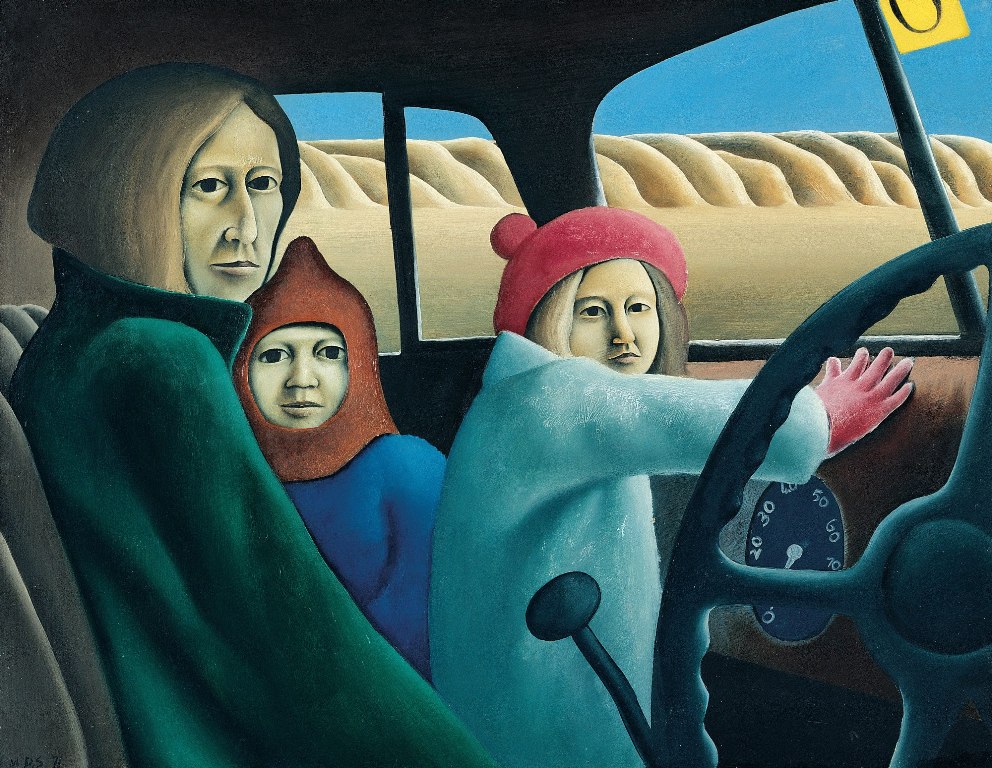CURATOR Ron Brownson ORGANISER Auckland Art Gallery OTHER VENUES Auckland Art Gallery, 3 September 2005–30 January 2006 PUBLICATION essay Ron Brownson
In 1964, after studying at Elam School of Fine Arts in metropolitan Auckland, Michael Smither returns to his hometown of regional New Plymouth. The Wonder Years includes iconic works Smither made there between 1964 and 1978. Those years were tough, as he juggled jobs in a car-painting factory, as a milkman, and as a fisherman to make ends meet while raising a family and pursuing his painting. In the show, each work is accompanied by a few sentences from the artist, presenting the show as a personal account.
In his work, Smither confronts the reality of provincial isolation. His three young children and his young wife Elizabeth form much of his subject matter. His stylised, almost macabre depiction of children, interiors, and everyday activities render them as emblems of domestic life, darkly personal yet relatable.
Born and raised a Catholic, Smither probes his faith. Some paintings delve into religious subjects. Crucifixion (1977) shows Christ nailed to the cross but with a black hollow where his face should be. It was apparently informed by a hollow cicada shell Smither came across while painting it. In the show, Smither’s religious paintings are hung amongst his domestic paintings as if inseparable from mundane, everyday life.
In the label, he claims ‘As a child, seeing the auras and halos around saints and angels and Christ and the Virgin Mary was a big part of my existence. I was always looking for miracles, that’s what I was after. But I never found any, to be honest. I think that’s what influenced me to accept the ordinary. I was not looking for miracles elsewhere.’
Landscape is a key subject. Sometimes, viewpoints are extremely low. In Rocks with Mountain (1968), rocks on a beach occupy most of the composition, dwarfing a tractor and the snowy peak of Mount Taranaki on the horizon. Other works look down on New Plymouth from a God’s-eye perspective. Examples of portraiture and still life are also included, along with a selection of Smither's early sketchbooks, containing rough preparatory drawings for his glossy, colourful paintings.
Smither’s New Plymouth works are now among the most valued works in New Zealand art. As Aaron Kriesler writes in the Listener, ‘the subject matter and manner in which this artist approached his material became important because he was able to produce a repertoire of images that converted events and experiences into images that people in his community could find a strange solace in.’




































































